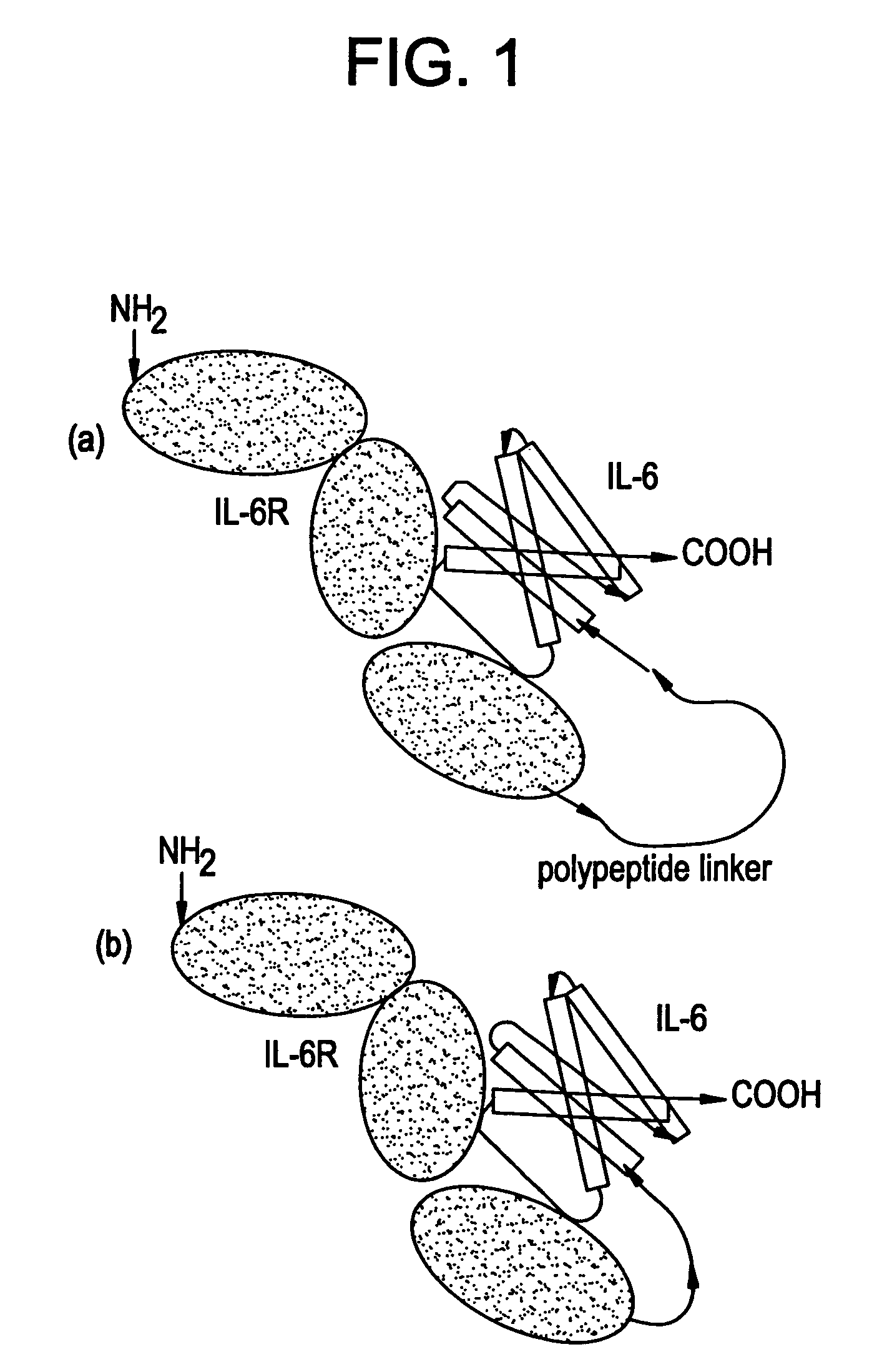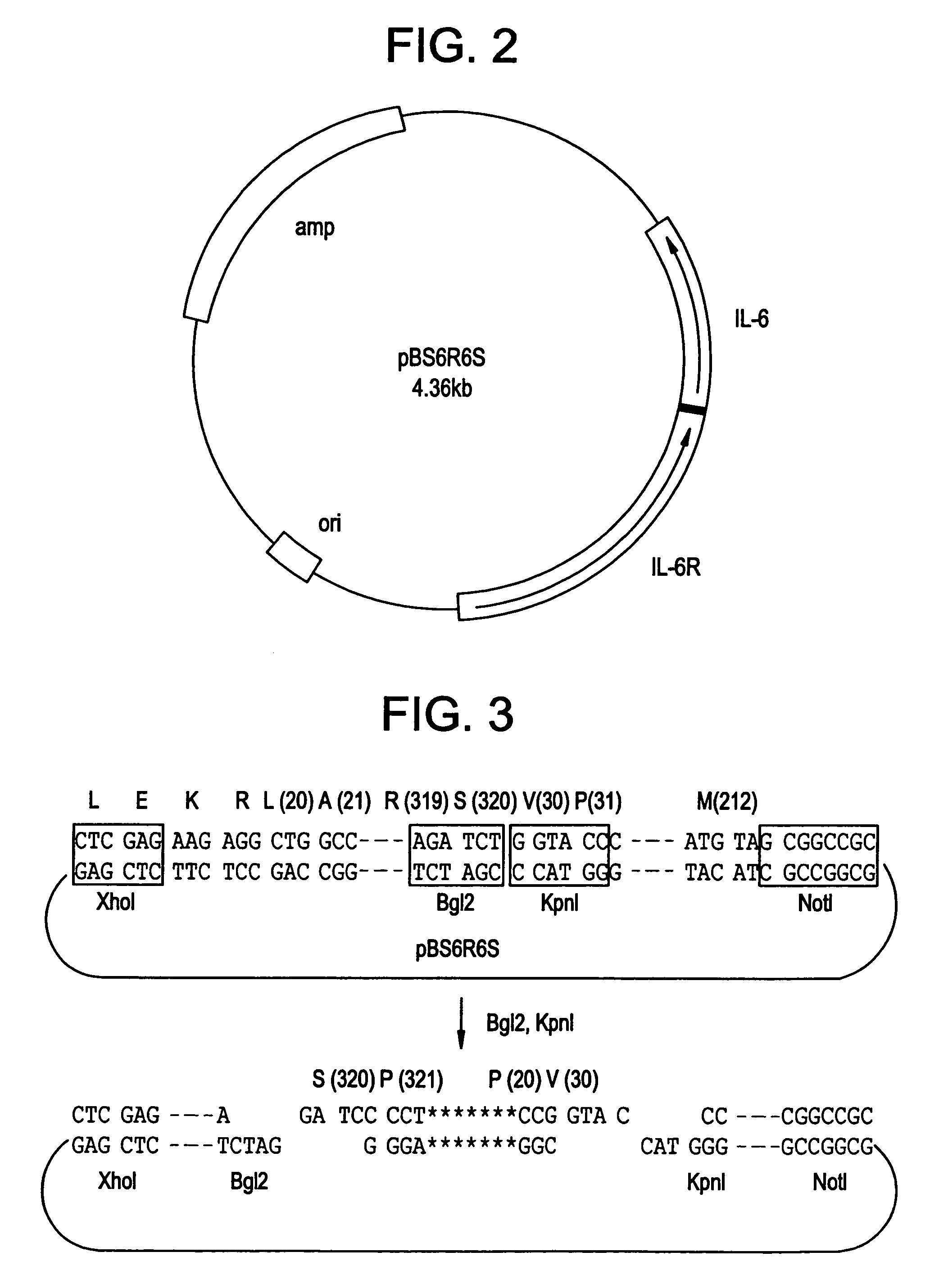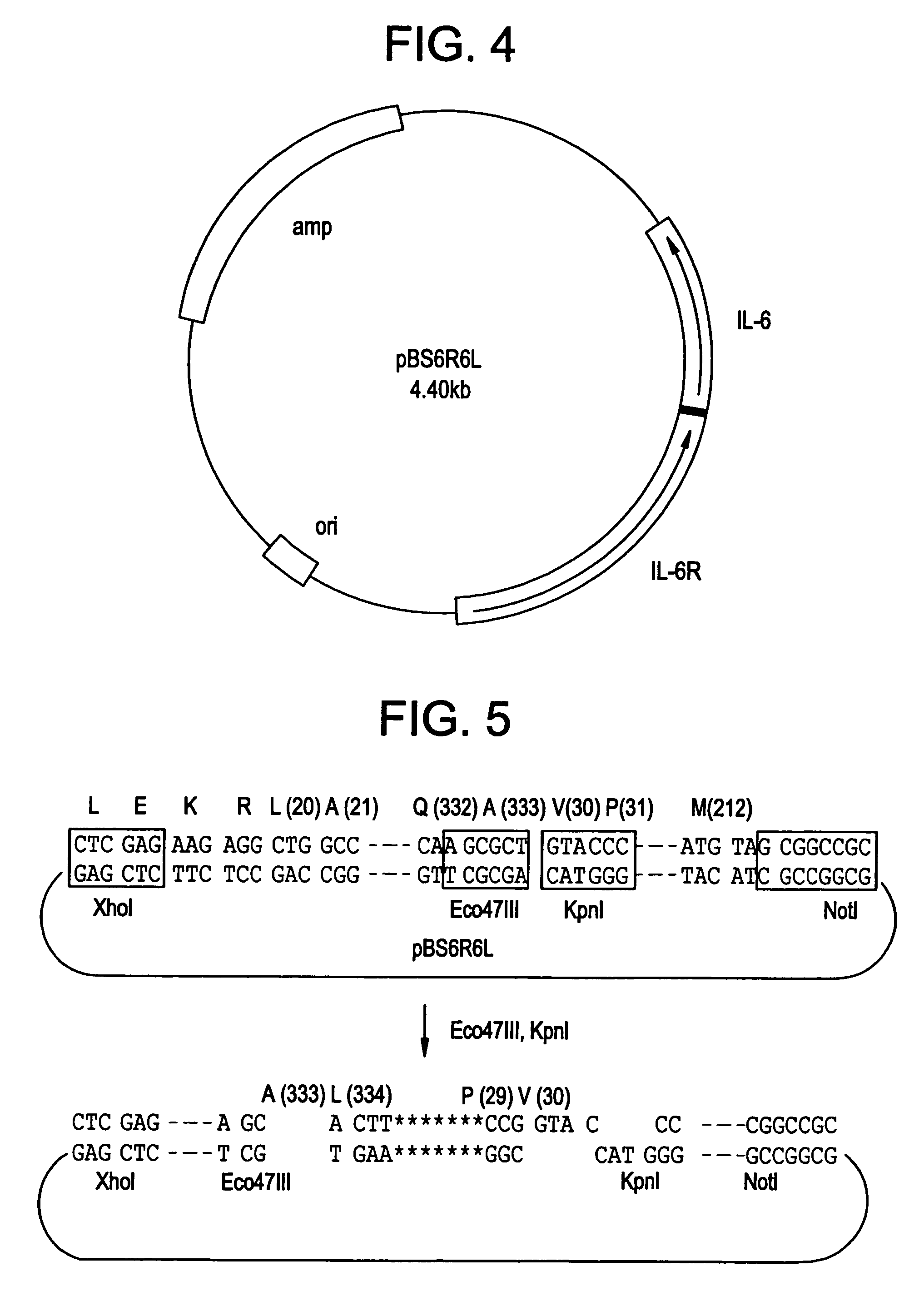IL-6 receptor.IL-6 direct fusion protein
a technology of il-6 and direct fusion, applied in the field of fusion proteins, can solve the problems of high possibility of the aforementioned immune reaction, the limited effect of il-6 administered to the human body, and the number of blood
- Summary
- Abstract
- Description
- Claims
- Application Information
AI Technical Summary
Benefits of technology
Problems solved by technology
Method used
Image
Examples
example 1
Preparation of Intermediate Plasmids
[0064]Intermediate plasmids pBS6RS and pBS6RL were prepared by inserting an oligonucleotide coding for a linker for the purpose of preparing a gene (cDNA) coding for an IL-6R-IL-6 fusion protein linked through a linker as below.
[0065]Firstly, a cloning vector, pBluescript II KS(-) (produced by Toyobo Co.), was cut by a restriction enzyme, KpnI, treated with a Klenow fragment, and subjected to ligation reaction to obtain plasmid pBS with the KpnI site deleted.
[0066]Then IL-6R gene (cDNA) was amplified by using a primer p6RAB20L (SEQ ID NO:45) and a primer p6RF320S (SEQ ID NO:46), and was cut by XhoI. This was inserted into pBS having preliminarily been cut by XhoI and EcoRV to obtain pBS6R.
[0067]IL-6 gene (cDNA) was amplified by using a primer pIL6B2 (SEQ ID NO:47) and a primer pIL6F (SEQ ID NO:48), and was cut by Bgl II and NotI. This was inserted into a plasmid pBS6R having preliminarily been cut by Bgl II and NotI to obtain pBS6R6S. FIG. 2 shows...
example 2
Preparation of Expression Plasmids
[0069]Into pBS6R6S having preliminarily been cut by Bgl II and KpnI, Annealed Sequences 1-5 obtained by annealing two kinds of oligonucleotides were respectively inserted as shown below to obtain five kinds of plasmids having as an insert a gene for coding for the IL-6R•IL-6 fusion protein.
[0070]Annealed Sequence 1 (323AG4SA): The oligonucleotide of SEQ ID NO:1 is at the sense side, and the oligonucleotide of SEQ ID NO:2 is at the antisense side.
[0071]Annealed Sequence 2 (323AG4S2A): The oligonucleotide of SEQ ID NO:3 is at the sense side, and the oligonucleotide of SEQ ID NO:4 is at the antisense side.
[0072]Annealed Sequence 3 (334LPA): The oligonucleotide of SEQ ID NO:5 is at the sense side, and the oligonucleotide of SEQ ID NO:6 is at the antisense side.
[0073]Annealed Sequence 4 (333AΔA): The oligonucleotide of SEQ ID NO:7 is at the sense side, and the oligonucleotide of SEQ ID NO:8 is at the antisense side.
[0074]Annealed Sequence 5 (323AΔA): The...
example 3
Preparation of Transformants
[0097]From Pichia pastoris GS115 strain (Invitrongen Co.), competent cells were prepared by use of an EasyComp Transformation Kit (Invitrogen Co.), and thereto the respective expression plasmids having been linearized by Bgl II were introduced. The transformed cells were cultivated in a minimal nutrient culture medium, and transformed cells having lost the histidine-requiring property were selected.
[0098]The obtained transformants were inoculated onto MD plates (1.34% (W / V) of YNB wo AA (Yeast Nitrogen Base Without Amino Acid), 0.00004% (W / V) of biotin, and 2% (W / V) of glucose), and MM plates (1.34% (W / V) of YNB wo AA, 0.00004% (W / V) of biotin, and 0.5% (V / V) of methanol). Thereby, the respective transformants were examined for mut+ and muts.
[0099]Table 1 shows the numbers of the obtained transformants and the numbers of the obtained muts strains for the respective derivatives. For the respective derivatives, were obtained the strains transformed by the e...
PUM
 Login to View More
Login to View More Abstract
Description
Claims
Application Information
 Login to View More
Login to View More - R&D Engineer
- R&D Manager
- IP Professional
- Industry Leading Data Capabilities
- Powerful AI technology
- Patent DNA Extraction
Browse by: Latest US Patents, China's latest patents, Technical Efficacy Thesaurus, Application Domain, Technology Topic, Popular Technical Reports.
© 2024 PatSnap. All rights reserved.Legal|Privacy policy|Modern Slavery Act Transparency Statement|Sitemap|About US| Contact US: help@patsnap.com










